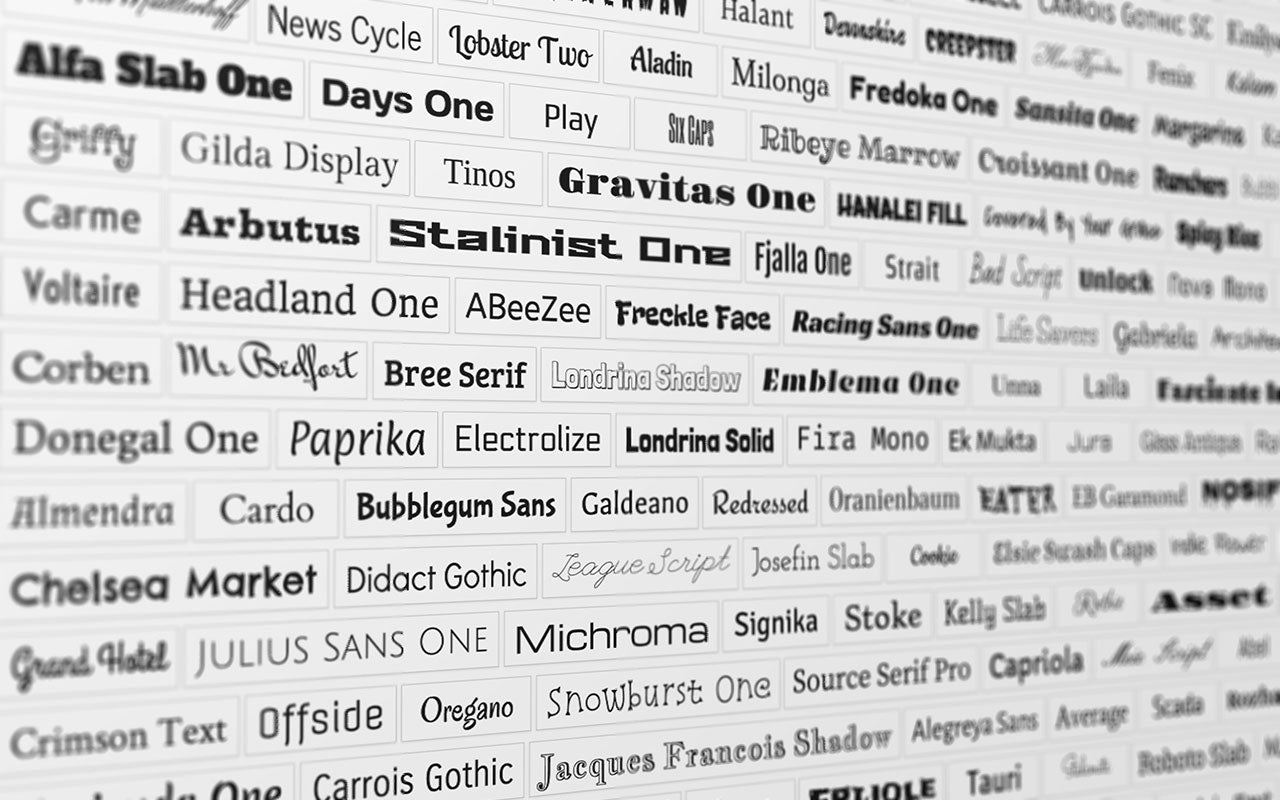It’s no secret that the visual presentation and usability of your eCommerce site matters. When you consider that the average session duration on an eCommerce site is typically between 1-3 minutes, each second a user spends on your site is critical to converting them into customers.
While seemingly a small element of your overall brand, fonts play a bigger role in your site performance and customer experience than you may realize.
What are Web-Safe Fonts?
When selecting fonts for your eCommerce site, your marketing team will no doubt want your site to look polished and convey your brand identity. However, not all fonts inherently appear the same way on every device. Operating systems and browsers are created with a pre-installed set of fonts that will always be readable and display as intended – these are called web-safe fonts. If your website uses a font that isn’t pre-installed on a user's computer, it will either download the font or substitute it with one from the same font family.
Web-safe fonts were created to give marketers and designers more freedom to create engaging digital content that they can guarantee will look exactly how they want it to look. There are different types of generic font families that have different characteristics and serve different purposes. Below, we’ll discuss why it is critical to use web-safe fonts for your website design.
Why are Web-Safe Fonts Important on eCommerce Sites?
Accessibility
All design elements on your site should be accessible to all users. Though Web Content Accessibility Guidelines (WCAG) don’t specify which typefaces or font sizes to use, the guidelines do include strict rules for readability and contrast. The Americans with Disabilities Act (ADA) does recommend sans-serif fonts in certain places, however. This is where web-safe fonts could be helpful, as they can help you to choose a font that is visually appealing while also meeting accessibility compliance. Many web-safe fonts are also specifically designed for readability on digital devices, which is why they can be a helpful guideline when choosing design elements, but not all web-safe fonts are accessible.
Load Speed
As noted previously, when your site uses a font that isn’t already downloaded on a user's device, each time they try to visit your page, they will have to wait longer for your website to load the font. According to Cloudflare, site speed has a direct correlation with conversion rate, some have found that for every 1 second improvement in loading time, conversions increased by 2%. When considering how many fonts you want to use across your site, it’s best to stay below five, or else it could cause your site to load slower. The good news is that font files tend to be significantly smaller than any image files you are likely to have on your site already. So, if your eCommerce team is already optimizing your site for speed, this should be a simple lift.
Branding
As you’ll see later on in this article, visual consistency has become less of an issue when considering whether or not to use web-safe fonts, as they aren’t as relevant anymore. However, web-safe fonts were created for a reason, and their design elements still hold value for your marketing strategy. Web-safe fonts were created to be legible and clean on digital devices, which ultimately makes for a better experience for your customers.
Most Common Web-Safe Fonts
Each operating system has hundreds of fonts pre-installed, but there are a few that are most common on all operating systems. Every font exists within a family of similar fonts that have unique characteristics, and they all serve different purposes for different brands. The font families include:

Web-safe sans-serif fonts like Helvetica, Arial, Verdana, Tahoma, Trebuchet MS, Impact, and Gill Sans are all great choices if you want to prioritize readability and convey clean, minimalist branding. Sans-serif fonts are always safe choices for accessibility and are often used in website copy.

Serif fonts that contain strokes at the ends on each letter, such as Times New Roman, Georgia, Palatino, Baskerville were created to mimic the way letters were carved into stone long ago, or the way that brush strokes naturally leave marks at the end of every line. They are used to maximize readability for longer passages, as the extra marks tend to help guide our vision as we read long stretches of text.

Monospaced fonts are also known as fixed-width fonts as the spaces between each character are always the same. They are primarily used in computer coding and applications where clarity and readability are important. Andalé Mono, Courier, Lucida, Monaco are examples of web-safe monospaced fonts.

Cursive fonts such as Bradley Hand, Brush Script MT, Comic Sans MS, are meant to mimic handwriting and characters are usually joined together. Luminari is a fantasy font, which are decorative fonts meant to make a statement. Cursive and fantasy fonts are web-safe, but they are not necessarily safe for accessibility compliance.

How to Use Web-Safe Fonts on Your eCommerce Site
Utilizing web-safe fonts can create visual consistency, support accessibility on your eCommerce site, and limit friction in the customer experience. Despite some discourse suggesting that web-safe fonts are less relevant today in a world of mobile-first design, they are still an important fallback, as they display properly no matter where they are viewed. This consistency matters when it comes to your eCommerce business especially – if users can rely on a consistent and accessible site experience, they are more likely to become loyal customers.
Is your site optimized for long-term growth? At Virid, we are the strategic partner that online retailers rely on to solve their complex eCommerce challenges and grow their business. Our comprehensive approach combines cutting-edge marketAgility eCommerce platform with agency services and dedicated support from our team of specialists.
If you’re looking to boost your website’s engagement and increase revenue, contact our team today to get started.


